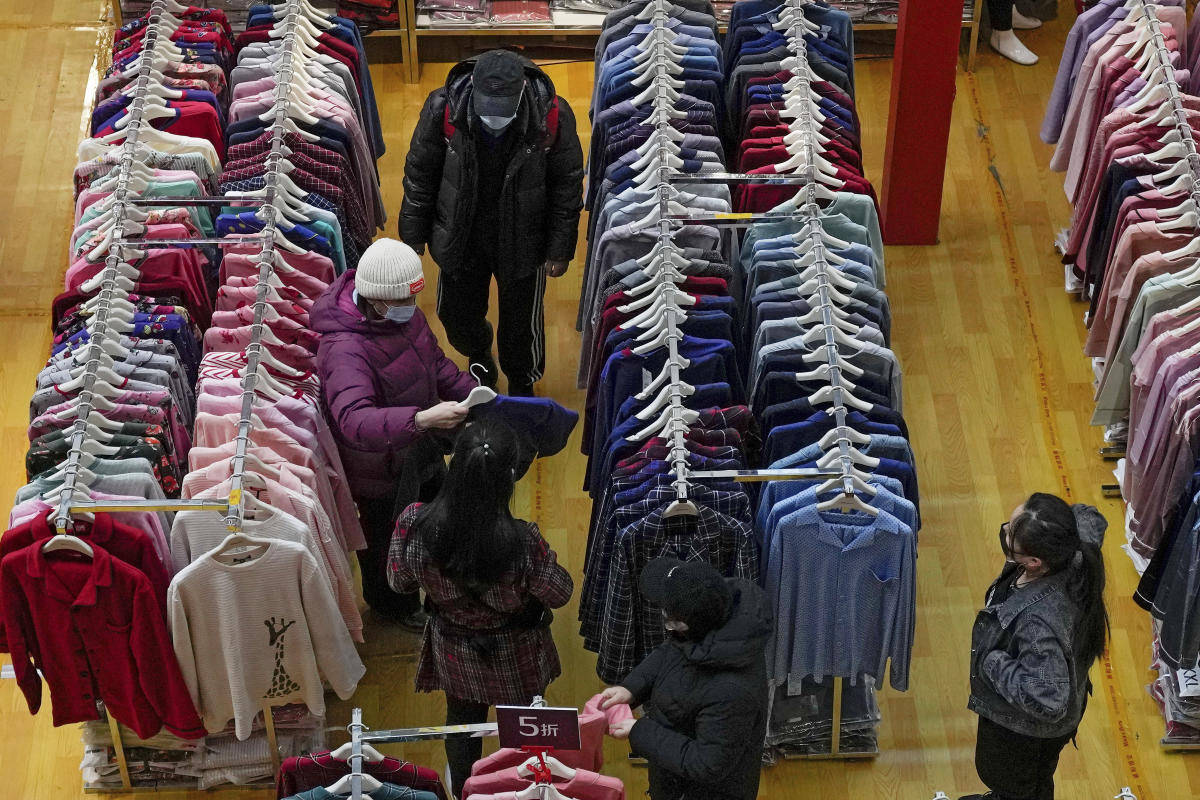[ad_1]
MONTGOMERY, Alabama – Alabama’s unemployment rate of 3.1% is the lowest in the Southeast and one of the lowest in the country. Heads of state have repeatedly highlighted this impressive mark as a sign of the state’s economic recovery from the throes of the COVID-19 pandemic, which saw unemployment soar to nearly 14% last year .
Yet employers statewide are struggling to find enough workers to fill jobs, forcing some to cut hours or production.
Why the economic disparity? It could have to do with the number of Alabamians actually participating in the workforce, a number that declined during the COVID-19 pandemic.
Alabama’s most recent participation rate, which measures those working or looking for work, was 56.6% for August 2021, down slightly from the pre-pandemic level of 57.9% in August 2019, according to the Alabama Department of Labor. This represents approximately 31,490 people leaving the state’s workforce over a two-year period.
State lawmakers like Representative Danny Garrett, R-Trussville, are digging into the numbers to determine why there are so many unfilled jobs in the state. He says that while the unemployment rate is low, it doesn’t tell the whole story as it doesn’t reflect the number of able-bodied residents who, for whatever reason, have chosen not to participate in the workforce.
“My concern is that the Department of Labor is really focused on dealing with unemployment and the Department of Commerce is focused on creating new jobs in the state, but looking at that labor participation,” Garrett said in Alabama. Daily News. “There really isn’t a champion for that at the moment.”
Tara Hutchison, director of communications for the Alabama Department of Labor, said the labor shortage was not new to Alabama.
“People have to remember that despite the pandemic, this problem never really went away and was exacerbated by the pandemic,†Hutchison said. “The turnout in Alabama fluctuates only one or two percentage points over an entire year, and the best rate in recent years was in 2010 when it hovered around 59 percent.”
Alabama’s 56.6% participation rate represents 2,138,688 residents currently employed or unemployed and seeking employment. Neighboring states have similar participation rates: Mississippi at 55.9%; Florida at 59%; Tennessee at 60.6%; and Georgia at 61.6%.
Labor shortages are also a national trend, with the U.S. labor force participation rate declining for more than a decade, according to the U.S. Bureau of Labor Statistics.
Competing metrics
Hutchison and ADOL reject the idea that the labor force participation rate is the dominant economic indicator, saying it doesn’t really show who isn’t working or why they aren’t.
“You can’t really know the demographics of it,†Hutchinson said. “It’s really hard to determine what’s really going on and the number has fluctuated by less than a percentage point over the decades. “
The participation rate does not take into account the Alabama population who has never been labeled as a “worker” and yet works as child care or home child care, she said. declared.
Instead, ADOL maintains that the state’s unemployment rate and monthly employment report paint a more accurate picture of how many people are working in the state.
The number of unemployed Alabamians in August was 69,005, which means they have no job and are looking for one. The rate is calculated using data from the Current Population Survey conducted by the US Census Bureau and the US Bureau of Labor Statistics each month.
Another survey conducted by ADOL each month asks 20,000 employers in the state how many positions their company currently supports. The most recent figures showed 2,024,400 jobs supported in August 2021, down almost 74,000 from the pre-pandemic peak of 2,098,300 in November 2019.
Why have so many people left the workforce?
Hutchison cited several reasons for declining labor market participation, including lingering fears of COVID-19, people moving to other industries, the many COVID-related deaths seen over the past two years, early retirements. due to the pandemic and the inability to access health care for children. or aging parents.
“Additionally, some workers are unwilling to relocate to areas of the state with more jobs available due to family issues, wage issues or a number of other reasons,†Hutchison said. .
Impact on small businesses
Rosemary Elebash, state director of the National Federation of Independent Businesses, said small businesses in all sectors of the state are facing a labor shortage.
A recent survey of companies with 50 or fewer employees showed that 91% of them had a job offer and 93% could not find a qualified candidate for the vacant position.
She said disruptions in schooling and childcare are among the reasons skilled workers do not apply.
“We are now at a point where people have to decide if they are going to work or if they have childcare issues,†Elebash said. “It will depend on whether the school is open this week or closed for 10 days, and so this coming and going has created a challenge for working parents.”
Elebash said that throughout the pandemic, companies were willing to adapt or change to the needs of workers.
In a survey in June, 83% of those polled said they had increased their salary, benefits, including paid time off, increased health insurance, vacations and connection bonuses this year.
Elebash noted that the shortage of workers could also be a sign that more workers are returning to school for more advanced degrees or skills in order to secure better-paying jobs.
She highlighted the recent deployment by the Alabama Community College System of its regional rapid training centers that provide short-term, personalized, credit-free training to businesses and industries based on their specific training needs.
“Cliff of advantages”
Ed Castile, director of the Commerce Department’s Alabama Industrial Development Training division, agrees that child care and transportation issues were among the biggest barriers to getting people back into the workforce. He also cited the “cliff of benefitsâ€, which arises when people fear losing the public aid they depend on once they start earning more income.
Castile said that is why his department has partnered with the Atlanta Federal Reserve to roll out the Dashboard for Alabamians to Visualize Income Determinations, or DAVID, to help people understand how they can exit programs. ‘assistance with their expected income increases.
Several Republican leaders in Alabama have indicated that the additional $ 300 per month paid to individuals for unemployment benefits from the federal government was the cause of the labor shortage. Ivey ended Alabama’s participation in additional benefits in June, saying it “contributes to a labor shortage that is jeopardizing our continued economic recovery.”
Yet labor issues persist.
Another new federal benefit flowing from the pandemic is the Child Tax Credit, which was expanded under the American Rescue Plan Act enacted in March. The change increased the tax credit from $ 2,000 to $ 3,000 per child for children over six and to $ 3,600 for children under six. It also spreads out payments per month rather than at tax time, meaning most low- and middle-income parents get between $ 250 and $ 300 per child, per month based on a progressive income scale. .
Garrett, who chairs the Alabama Small Business Council, noted that additional federal benefits were likely part of the reason for the workers’ lack of return. But there are other factors at play, he said, especially as additional unemployment benefits have ceased.
“This is a huge problem and in the long run it could definitely be devastating to our state economy,†Garrett said.
Alabama Arise released a report in time for Labor Day this year, detailing some of its own recommendations on how to increase the state’s labor force participation.
In the report, Arise highlights the need for better options for child care, transportation and employment benefits. He also suggests that Alabama expand Medicaid to provide appropriate health services to boost the state’s economy, as well as improve the state’s COVID-19 vaccination rate by dispelling misinformation about the state. virus and vaccine.
What is done
Prior to the pandemic, Governor Kay Ivey made improving Alabama’s labor market participation rate a top priority, launching his “Success Plus” initiative which aimed to bring 500,000 newly accredited people into the market. work by 2025.
Now, after a year and a half of economic upheaval, its workforce development team says that goal is even more important.
Castile has said the state is still around 45% of the 500,000 target, but new workforce initiatives that recently started this summer will help boost those numbers.
He pointed to the Alabama Credential Registry, which provides a central location where all employers and education and training providers can post certificates, licenses, traditional degrees, and non-degree degrees offered in Alabama.
The registry will also be tracked in early 2022 by the Alabama Skills-Based Job Description Generator and Employer Portal, which will allow employers to create custom job descriptions for positions in their company.
The Alabama College and Career Exploration Tool is also under development, which will allow job seekers to develop verified resumes and link directly to skill-based job descriptions generated by employers. Something of a Match.com for employers and job seekers.
“At the end of the day, I think we are winning the battle and I think we are winning the war,†Castile said. “But every day there is a new and different battle in how we approach it and how we succeed, and that will be the reason we get there.”
[ad_2]




/cloudfront-eu-central-1.images.arcpublishing.com/prisa/G5VGGYQ3Y2CBIGFD2XOMHTPZ6M.JPG)







No Comment